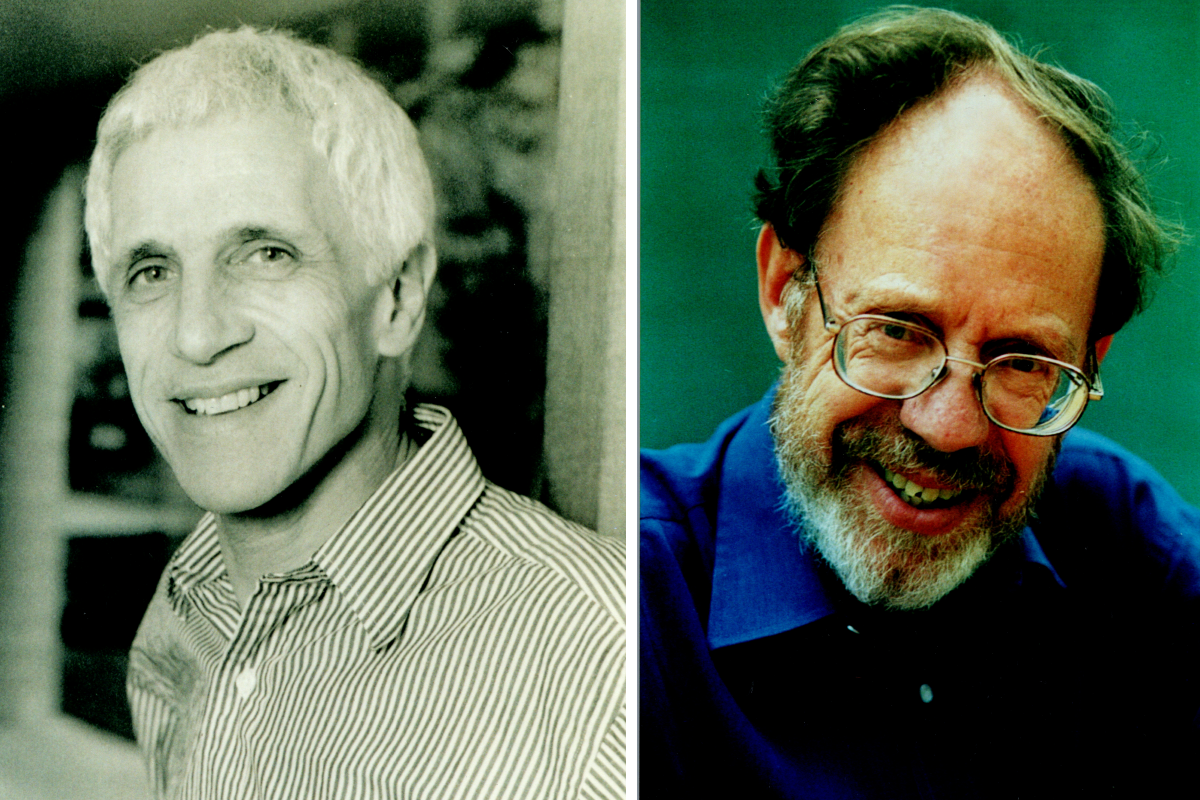- GU Home
- Paul Ehrlich Foundation
- Main Prize
- 2001-Harrison_Rossmann_e


A three-dimensional view on the protein envelope of viruses
The genetic material of virus particles is surrounded by an envelope consisting of symmetrically arranged protein building blocks. It has been known since the 1930s that viral envelope proteins can crystallise. With the help of X-ray structure analysis, it is possible to obtain more precise information on the three-dimensional shape of a crystallised protein. Since the protein envelopes of virus particles are very large and consist of several proteins, deciphering their three-dimensional structure was a great challenge. Harrison and Rossmann succeeded in this for the first time in 1978 and 1979 by developing new crystallographic techniques and exploiting the internal symmetry of the virus particles. Because of the easy availability of larger quantities, the scientists chose two plant viruses as the object of investigation: Harrison clarified the structure of the Tomato Bushy Stunt Virus and Rossmann the structure of the Southern Bean Mosaic Virus. This was followed by the characterisation of a whole number of viruses that are responsible for diseases in humans and animals. Examples include the common cold viruses (Rossmann) and the tumour-causing polyomaviruses (Harrison). Since then, the field of virus crystallography has expanded rapidly.
Understanding the three-dimensional structures of proteins allows unexpected conclusions to be drawn about their functions. Viral envelope proteins protect the virus from attacks by cell defences. On the other hand, they package the virus into a transportable form. Certain domains of the envelope proteins also interact with receptor structures of the host cell. After a successful "docking manoeuvre", the viruses succeed in penetrating the target cell. Understanding these structural-functional relationships makes it possible to develop new remedies against viral infection - both in the form of new drugs and new vaccines.
Apart from the scientific recognition, the Paul Ehrlich and Ludwig Darmstaedter Prize has a very special meaning for Michael G. Rossmann, as he was born in Frankfurt, spent his first eight years of life here and his grandmother was friends with Paul Ehrlich's widow, Hedwig Ehrlich.
CONTACT
Office Paul Ehrlich Foundation:
Friends of the Goethe University Frankfurt
Goethe-Universität Frankfurt
Campus Westend, PA-Gebäude
Theodor-W.-Adorno-Platz 1
60629 Frankfurt am Main
www.vff.uni-frankfurt.de
Managing Directors
Nike von Wersebe
Tel: 069 / 798 12234
Fax: 069 / 798 763 12234
wersebe@vff.uni-frankfurt.de
Julia Lange
Tel: 069 / 798 12452
Fax: 069 / 798 763 12452
E-Mail: lange@vff.uni-frankfurt.de
Adviser for Members & Foundations
Tina Faber
Tel: 069 / 798 17237
Fax: 069 / 798 763 17237
faber@vff.uni-frankfurt.de
Marketing
Constanze von Plato
Tel: 069 / 798 17237
Fax: 069 / 798 763 17237
vonplato@vff.uni-frankfurt.de
Science Communication
Joachim Pietzsch
Tel: 069 36007188
j.pietzsch@wissenswort.com
Bank Account
Paul Ehrlich-Stiftung
Deutsche Bank AG
IBAN: DE38500700100700083900
BIC: DEUTDEFFXXX
Donations are tax deductible.
- Studying at Goethe University
- International applicants
- Faculties
- Overview of study programmes
- Programme for refugees
- GRADE
- Goethe Business School (continuing education)
- Research at Goethe University
- Scientific news
- Goethe Welcome Center (for international researchers)
- Collaborative research projects
- Individual research
- Visiting fellowships
- Endowed chairs
- About the University
- News-in-brief
- University administration
- Campus locations
- Campus life
- University archives (German)
- Rhine-Main-Universities








